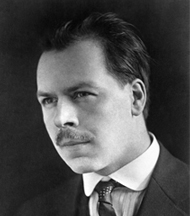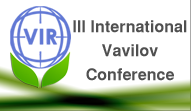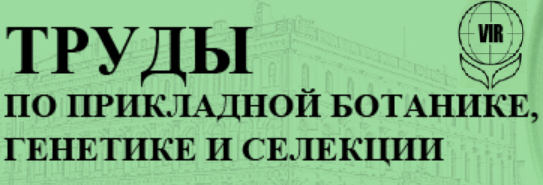Contents
Acknowledgements
Chapter 1. Initiation of collecting and studying plant genetic resources in Russia from 1894-1920.
- Establishment and activities of the Bureau of Applied Botany before 1905.
- The structure and reorganization of the Bureau in the years 1905-1920.
- Objectives and tasks of the Bureau, 1905 -1920.
Chapter 2. Brief sketch of N.I.Vavilov’s life up to 1920.
- Education in Moscow.
- Studies abroad.
- Activities between 1914 and 1920.
- First collecting expeditions.
- Saratov period.
- Theoretical concepts of N.I.Vavilov researches - steps forward from De Candolle and Darwin.
Chapter 3. N. I.Vavilov as Director of the Institute of Plant Industry.
- N.I.Vavilov’s initiatives in the Department of Applied Botany and Plant Breeding.
- Travels in America and Europe.
- Rebuilding the Department.
- Geographically based studies of plant production.
- N.I.Vavilov’s activities in the All-Union Institute.
- The foundation of the Institute and the development of its work programme.
- Genetical research.
- Crop evolution and taxonomic work.
- Fundamental publications.
- Agro-ecological studies.
- Plant introduction and crop improvement.
- N.I.Vavilov as a prominent organizer of science in the USSR.
- N.I.Vavilov and the Institute’s internal relationships, 1925-1938.
- American visitors.
- Visits by O.Frankel and others.
- A visit by Jack G.Hawkes.
- References of N.I.Vavilov’s activities
Chapter 4. Collecting missions and explorations, 1922 - 1940.
- Afghanistan.
- Transcaucasus and Turkey.
- North Africa.
- The Middle East.
- Abyssinea and Eritrea.
- The Mediterranean.
- Spain.
- The Far East.
- The Americas.
- Other travels.
Chapter 5. N.I.Vavilov’s theoretical contributions.
- The law of homological series in hereditary variation.
- Centres of origin.
- Disease resistance.
- Taxonomic studies.
- Centres of agriculture.
- Plant breeding .
Chapter 6. Activities associated with plant genetic resources in the 1930s and 1940s.
- T.D.Lysenko’s role in the development of agricultural science in the USSR.
- Collision of scientific concepts.
- N.I.Vavilov’s arrest, imprisonment and death. Dismissal of the Institute’s leading researchers.
- World War II. The siege of Leningrad and the resue of the collections.
Chapter 7. Developments N.I.Vavilov's theories on plant genetic resources.
- New information on centres of origin and diversity.
- The development and organization of VIR’s work.
- Phylogeny and genetics.
- Long term conservation.
- Basic research.
- Collecting missions in the 1940s and 1990s.
- Expeditions within the former USSR..
- Overseas collecting
- 1950-s.
- 1960-s.
- 1970-s.
- 1980 - 1990-s.
- Organization of collecting and exchange.
Chapter 8. Creation of the network of genebanks in COMECON countries.
- Establishement of the Scientific and Technical Council for colections of wild and cultivated plants (STC).
- Organization and execution of joint collecting missions.
- Joint field evaluation and use of plant genetic resources in plant breeding.
- Establishment of genebanks in COMECON countries.
- Bulgaria.
- Hungary
- East Germany.
- Poland.
- Czech Republic.
- Romania.
- Yugoslavia.
- Mongolia.
Afterword - VIR’s activities after 1990.
Appendixes
List of mentioned names.
Major N.I.Vavilov's expeditions.
Map of N.I.Vavilov's expeditions.
Major collecting missions accomplished by N.I.Vavilov's associates.
Major species collected by N.I.Vavilov on his expeditions (1916-1940).
VIR's major expeditions within the former USSR in 1986-1990.
Major collecting missions to foreign countries accomplished by VIR's specialists (1954-1994).
Joint collecting missions of COMECON countries (1973-1990).
The list of the International COMECON List of Descriptors.





